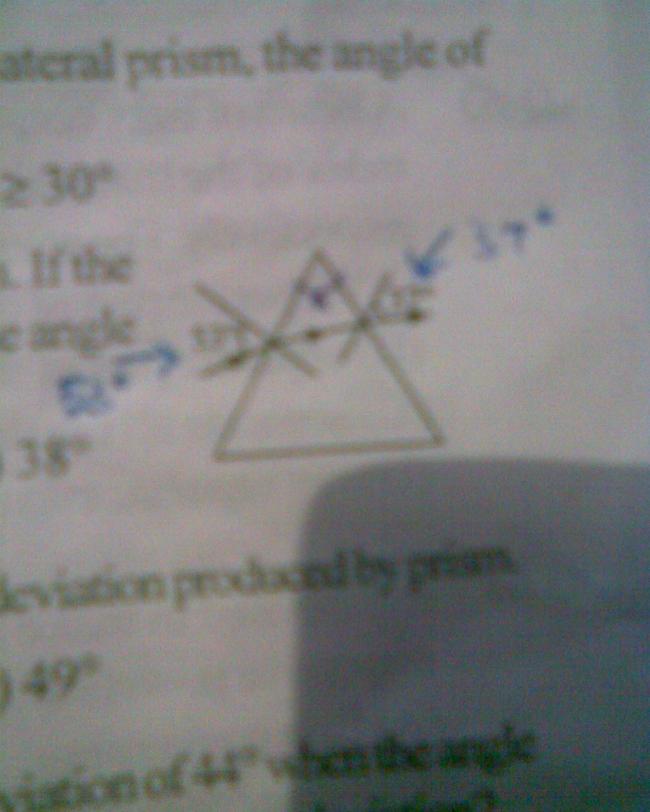nthing missing
 a ray incident at an angle 53° on a prism emerges at an angle of 37° as shown .if the angle of incidence is made 50° then value of angle of emergence a 35 b 42 c 40 d 38
a ray incident at an angle 53° on a prism emerges at an angle of 37° as shown .if the angle of incidence is made 50° then value of angle of emergence a 35 b 42 c 40 d 38
-
UP 0 DOWN 0 0 21

21 Answers
skygirl
·2009-03-11 09:57:00
i dunno y i took this at first place...
and also din think twice becoz... i got 38 .. and then saw the hided ans is 38.. so i thot i was correct...
greatvishal swami
·2009-03-11 08:47:10
a ray incident at an angle 53° on a prism emerges at an angle of 37° as shown.......
where shown ????
vector
·2009-03-11 09:41:15
hey sky 1 doubt δ= i-e is nt always applicable
it means e=a/2 not always possible
skygirl
·2009-03-11 09:28:12
δ = i + e - A
case1: i=53,e=37 =>δ=16 so, A=76.
case2 : i=50, e=e , δ = i-e, A=76
aplying formula, i-e= i +e - 76 => 2e=76 => e=38.